Excerpts from Jim Conrad's
Naturalist Newsletter
entry dated August 26, 2022, issued from near Tequisquiapan, elevation about 1,900m (6200 ft), N20.565°, W99.890°, Querétaro state, MÉXICO
VARIABLELEAF BUSHBEAN
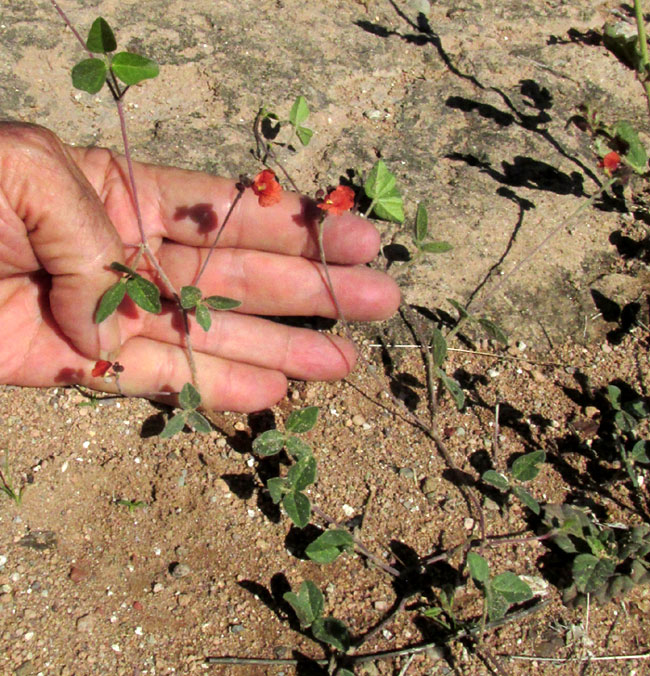
The above vine sprawled across very thin, sandy soil gathered in spots atop outcropping bedrock formed from ancient compacted volcanic ash, and sediment washed down from nearby hills of volcanic rhyolite. Even at this distance, with the vining habit, leaves divided into three leaflets, and irregular-looking flowers, it's clear this this a member of the third-largest of all plant families in the world, the Bean Family, the Fabaceae. Still, the flower's structure is remarkable:
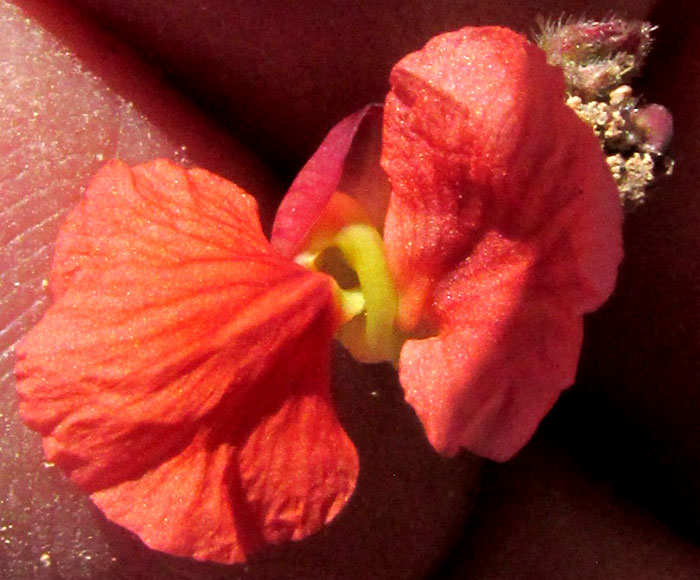
The Bean Family displays many flower types, each of the family's main subfamilies producing its own distinctive blossom type. In this subfamily, the Papilionoideae, one expects "papilionaceous" flowers, or "butterfly-like." Papilionaceous flowers normally are bilaterally symmetric -- with one side the mirror image of the other side, as shown on our bean flower page. There you see that the average papilionaceous flower consists of a large standard petal atop two side petals called wings, and a keel composed of two lower petals with their common margin fused, forming a scoop-shaped keel.
The papilionaceous blossom in the above picture is papilionaceous, but its standard is relatively small, the two wings are relatively gigantic, and the keel is slender and very curved. Moreover, the whole assemblage appears bent to one side, things not lining up right. The above photo shows a very young flower. Older blossoms bear even more spectacularly curved keels:
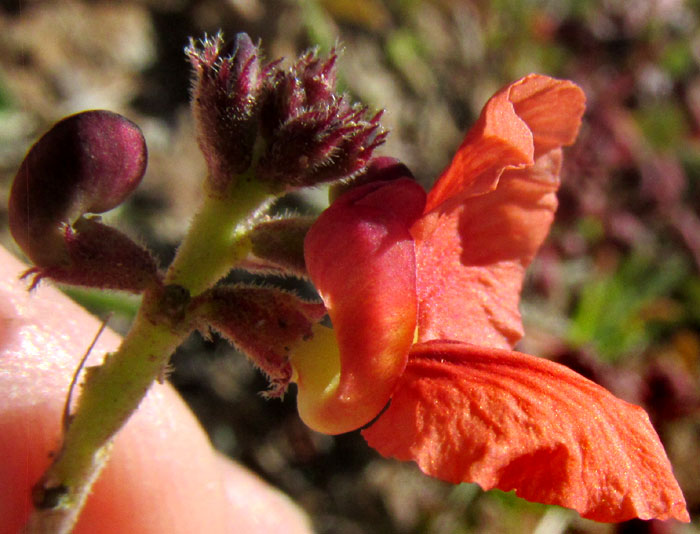
At the picture's far left, an unopened flower bud is enlarging, while at the top several much less developed flower buds are clustered. In the picture's right side you see that the keel has completely curved around, and one of the wings has been bent down. The flower's sexual parts, its stamens and pistil, reside inside the curved keel, also curving.
However, such departures from the classic papilionaceous structure isn't unusual in the Bean Family. As always, Nature experiments with everything all the time. The flowers of normal garden green bean vines strongly coil. In fact, in the Yucatan we've met another species whose keels coiled very strongly to one side just like this plant's, Macroptilium atropurpureum, commonly referred to as Purple Bushbean.
In fact, here we have another species of bushbean. It's MACROPTILIUM GIBBOSIFOLIUM, often called Variableleaf Bushbean in English. Similar to the Purple Bushbean, basically it's a weedy species along roadsides, pastures and such, yet also able to live on dry, rocky hillsides. It's distributed from Arizona and New Mexico in the US south through upland Mexico into Guatemala and Honduras.
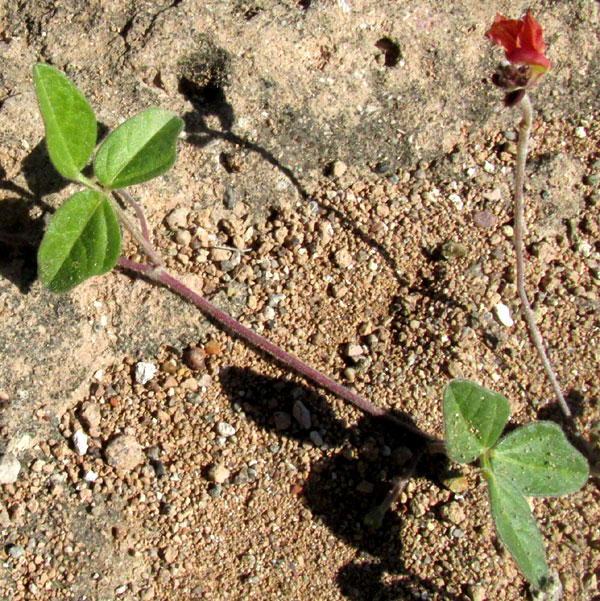
Despite the strange flower structure, Variableleaf Bushbean's leaves and stems are very similar to leaves and stems of many other viny or sprawling herbaceous members of the Bean Family. Bean Family species often bear distinctive stipules, which are modified, often scale-like, modified leaves arising on the stem at the petiole's base. Our plant had lost its stipules, leaving only the stipular scar:
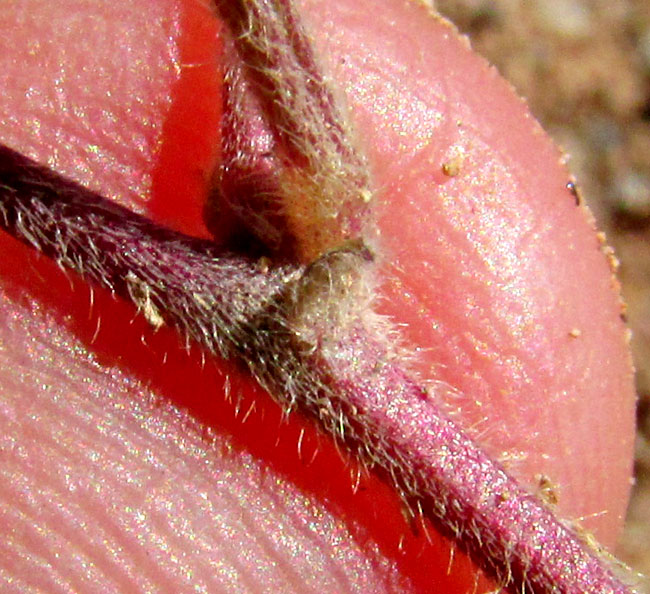
On the above stem, the stipular scar is the furrow cutting across the hairy stem, beneath the tear-shaped bud in the angle formed where the petiole arises from the stem.
But, back to that flower. Why on Earth would a flower screw itself into such a bizarre configuration? That question was answered on our Purple Bushbean page this way: "I saw the answer when a bee landed on the platform-like lower wing, thrust itself into the blossom forcing petals this way and that, and the wormlike style shot out of the keel-tube to latch onto pollen carried by the visitor. As usual, the screwiness is all for better sex."